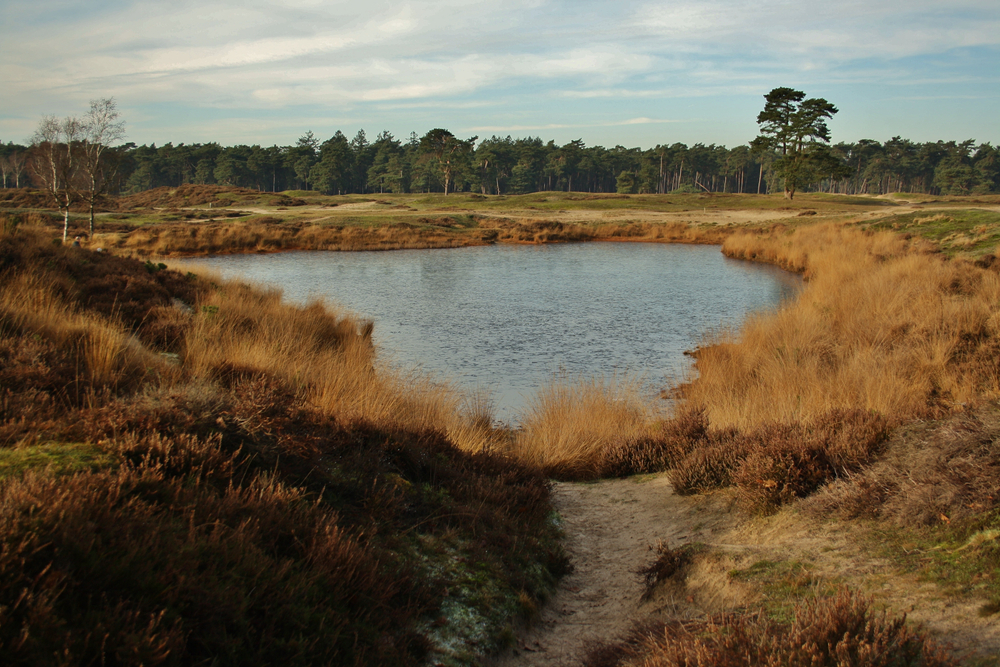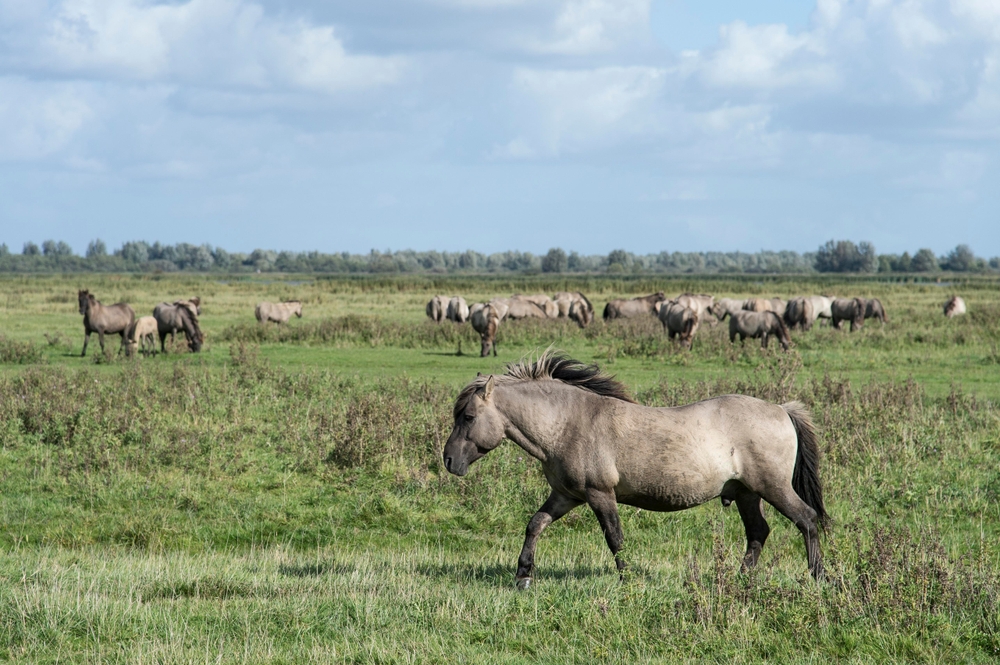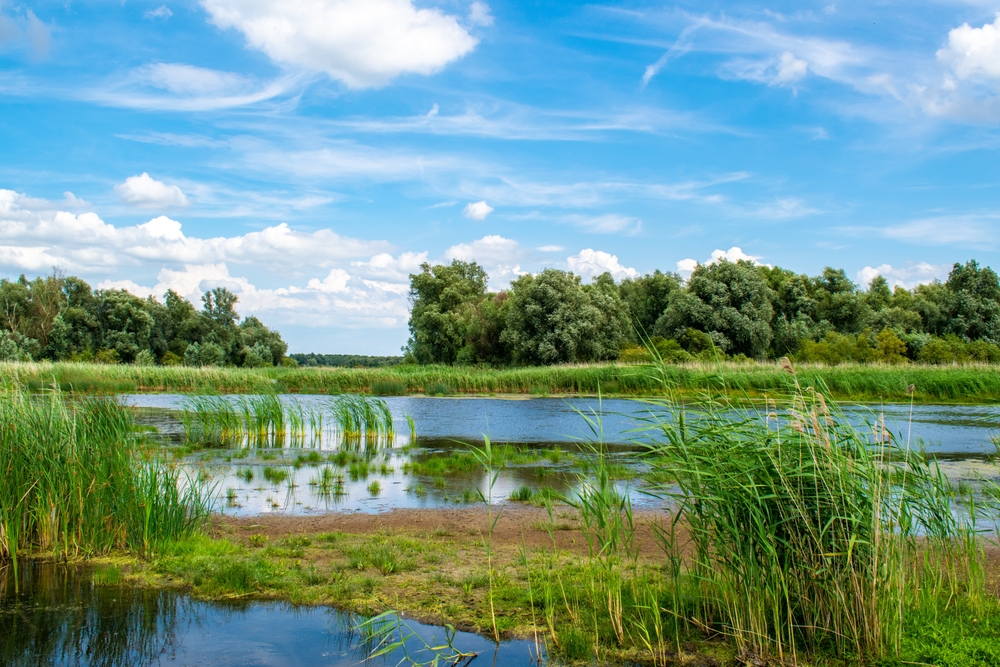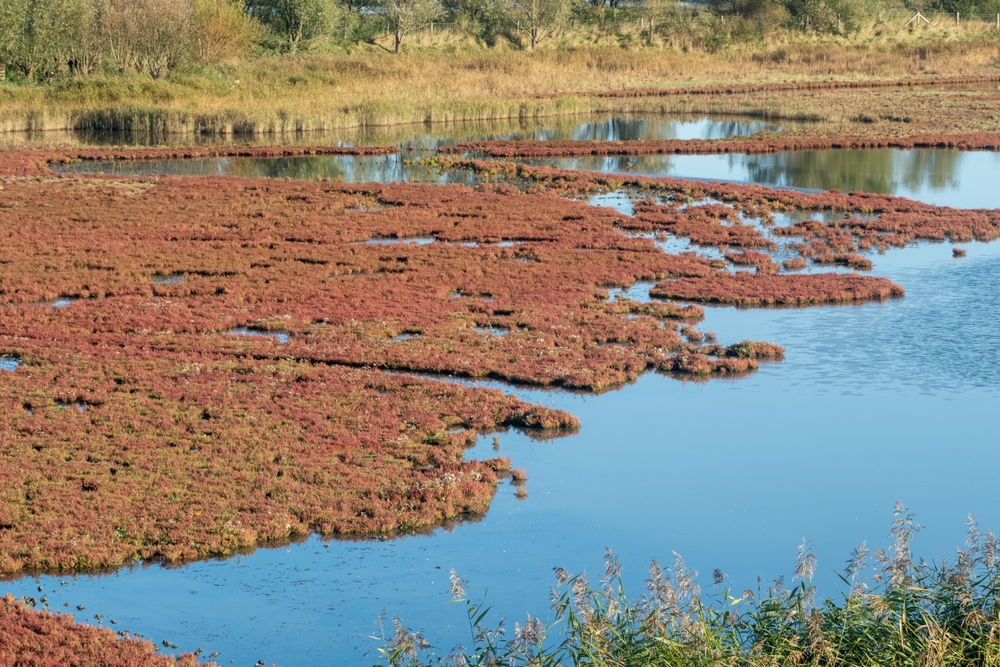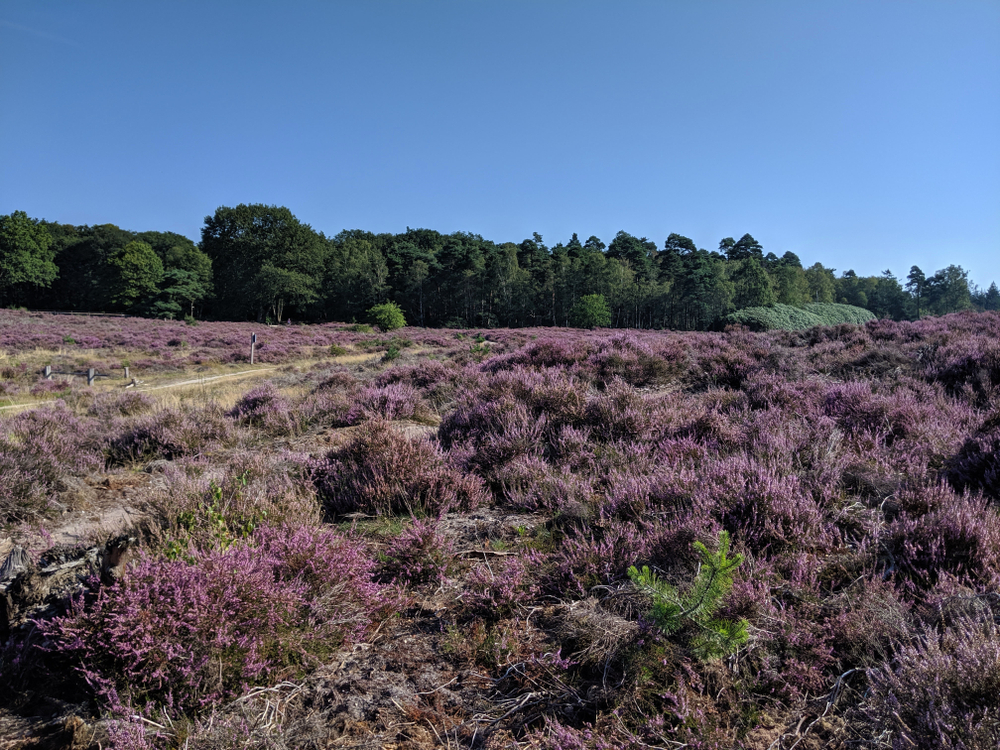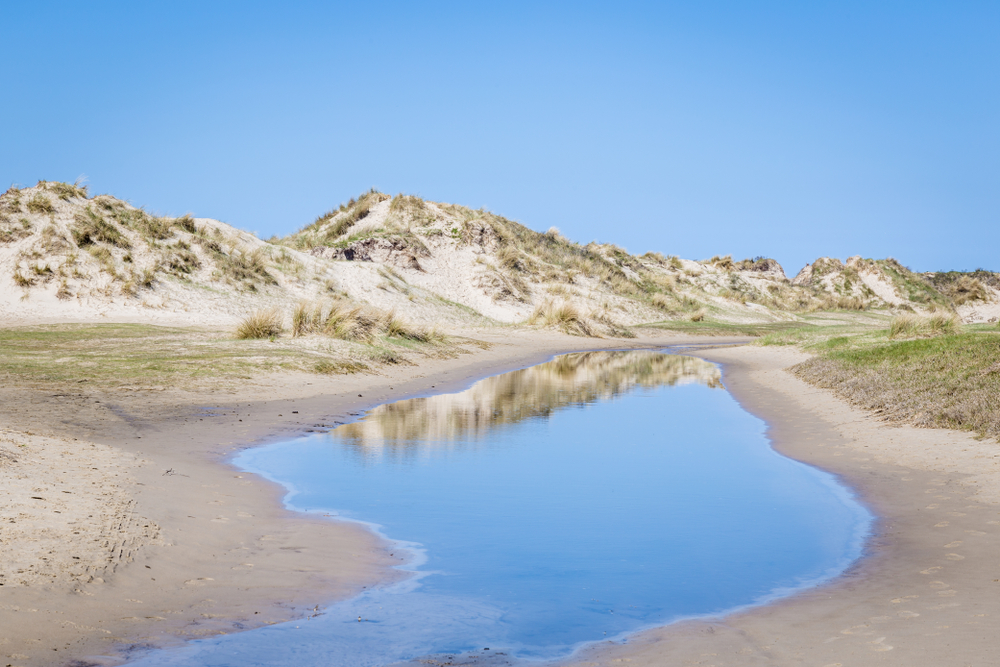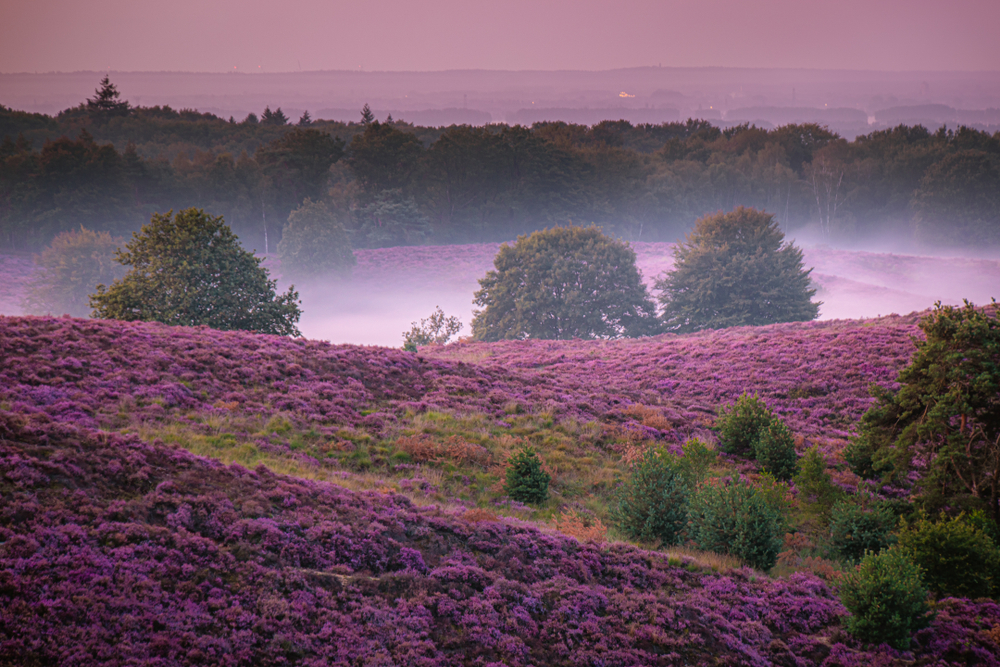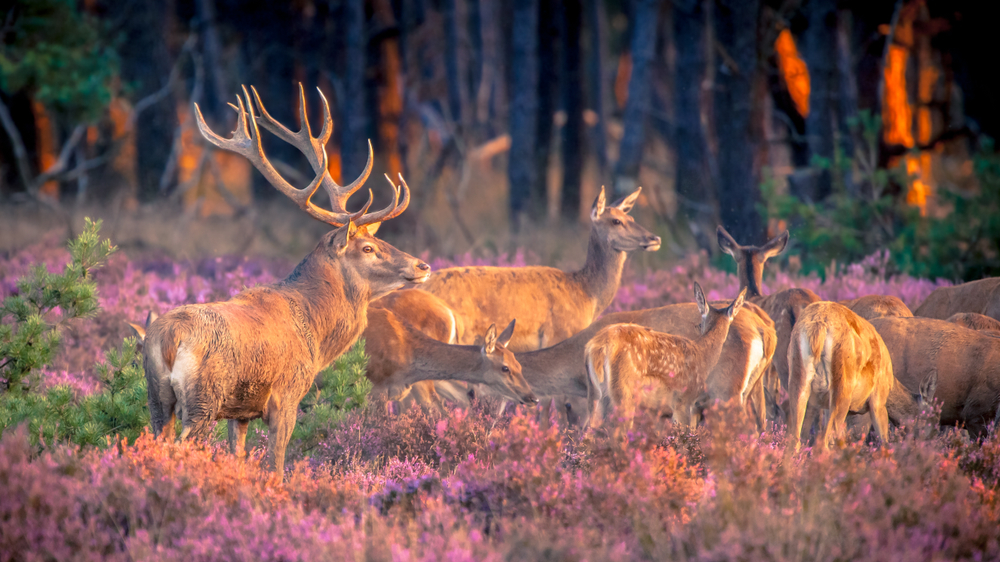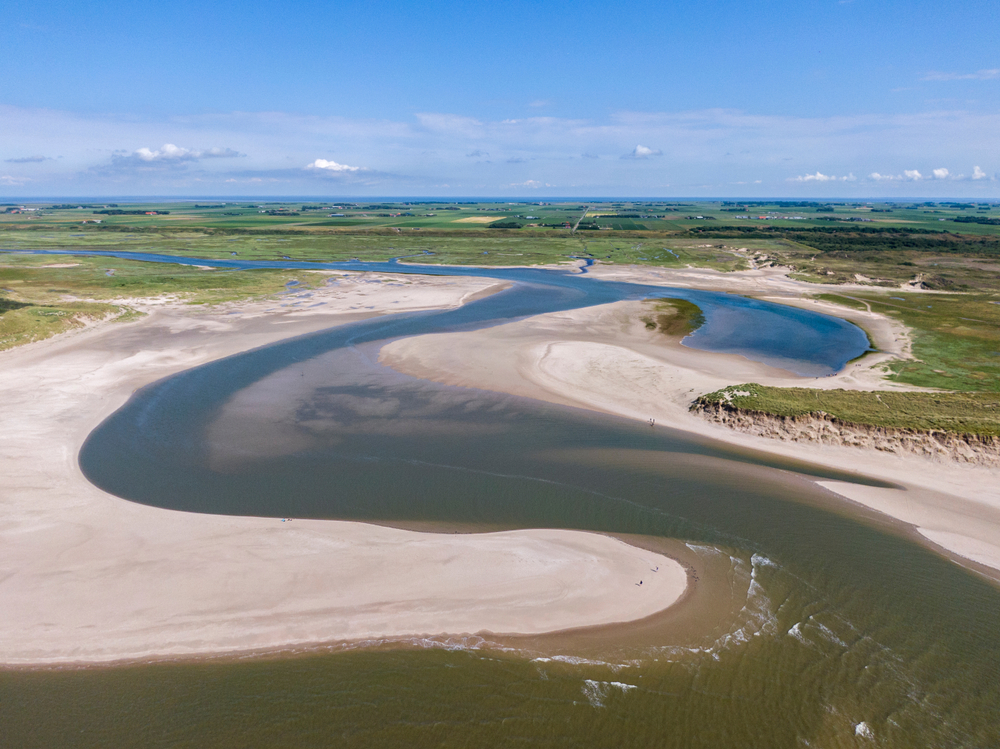Utrechtse Heuvelrug Overview
Utrechtse Heuvelrug National Park, known locally as Nationaal Park Utrechtse Heuvelrug, is a stunning protected area in the central Netherlands.
Spanning approximately 61 square miles (159 square kilometers), this park stretches across the province of Utrecht, covering a diverse landscape of rolling hills, dense woodlands, and heathlands. It is the second-largest national park in the Netherlands and serves as an important natural refuge in a country known for its flat terrain.
The park’s geography was shaped by the last Ice Age, resulting in its distinctive ridges and valleys, which contrast with the surrounding lowlands. The highest point, Amerongse Berg, reaches 69 meters (226 feet) above sea level, providing a rare elevation change in the Dutch landscape. Additionally, visitors will find picturesque sand dunes, ancient oak and beech forests, and expansive heathlands that turn a brilliant purple in late summer.
The park is home to a wide variety of plant and animal species. Majestic beech and oak trees dominate the forests, alongside Scots pines and birches, creating a dense canopy that provides shelter for an array of wildlife. Among the most notable mammals in the park are red deer, roe deer, foxes, and badgers, which roam freely through the woodlands.
The park is also a haven for bird enthusiasts, with over 100 species recorded, including the black woodpecker, Eurasian jay, and goshawk. The heathlands and wetlands attract migratory birds such as the European nightjar and the great grey shrike. Small mammals like pine martens and hedgehogs can also be spotted, adding to the rich biodiversity of the park.
One of the park’s most popular attractions is its extensive network of hiking and cycling trails. With over 50 miles of trails weaving through forests, over hills, and along open heathland, visitors can fully immerse themselves in the park’s natural beauty.
The park is also known for its cultural heritage, featuring historic estates and castles, such as Amerongen Castle and Huis Doorn, the latter being the former residence of Germany’s exiled Kaiser Wilhelm II. Many visitors also explore the artificial sand drifts near Soest, a unique feature formed by centuries of wind erosion and land use changes.
For those who want a more active experience, the park offers guided nature walks, horseback riding, and even mountain biking on designated trails. Families and casual visitors can enjoy picnic areas and scenic viewpoints, such as the Kaapse Bossen observation tower, which provides a panoramic view of the landscape.
Seasonal events, such as birdwatching excursions and nature photography workshops, offer deeper engagement with the park’s environment.
Utrechtse Heuvelrug National Park faces conservation challenges, including habitat fragmentation due to urban expansion and recreational pressure from its proximity to major cities. Conservation efforts focus on maintaining biodiversity, restoring native habitats, and managing human impact through carefully planned visitor infrastructure.
Successful projects include the rewilding of certain areas, the restoration of heathlands, and wildlife corridors that connect fragmented ecosystems. Sustainable tourism initiatives also play a key role in ensuring the park remains a thriving natural sanctuary for future generations.








































































